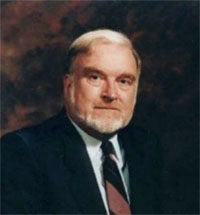Nov 04, 2025
Nov 04, 2025
by V. Sundaram
But this assumption is misleading. If he means by creativity any new idea or action that is valuable, then we cannot simply accept without scrutiny or question a person's own account of the criterion for its existence. There is no way of knowing whether a thought is new or a concept is new except with reference to some known and accepted standards and there is no way of declaring whether it is valuable until it passes the test of social evaluation. The term 'creativity' is a very generic term and covers a very vast ground. It refers to very different entities, thus causing a great deal of confusion. Mihaly Csikszentmihalyi says that there are at least three different types of phenomena that can legitimately be called by the name of creativity. The first usage, widespread in day to day conversation, refers to persons who are interesting and stimulating - in short, to people who seem to be extraordinarily clever or agile or bright. One noted for his brilliant conversation, a man with varied interests and a swooping mind, may be called 'creative' in this sense. The point to be noted is that unless they contribute something of permanent significance, it is better to refer to people of this kind as 'brilliant' rather than 'creative'. In the second usage, the term 'creativity' can be used to refer to individuals who experience the world in new, original, novel and untrodden ways. Their perceptions are fresh, judgements are insightful, who may make important discoveries that only they know about. In view of the highly subjective nature of this form of creativity, it becomes difficult to deal with it in a methodical manner for communication no matter how important it is for those who experience it. The third use of the term refers to great men of destiny like Leonardo da Vinci (1452-1519), Thomas Alva Edison (1847-1931), Pablo Picasso (1881-1973) or Albert Einstein (1879-1955), who have changed our culture in some important or vital respect. They are the creative ones without qualifications. By virtue of the fact that their achievements are by definition 'Public', it is easier to record or write about them. Mihaly Csikszentmihalyi in his masterpiece of a book titled 'Creativity' starts with the question: 'What is creativity?' According to him creativity is some sort of mental activity, an insight that occurs inside the heads of some special people.
Mihaly Csikszentmihalyi in his masterpiece of a book titled 'Creativity' starts with the question: 'What is creativity?' According to him creativity is some sort of mental activity, an insight that occurs inside the heads of some special people. Therefore, creativity does not happen inside people's heads, but in the interaction between a person's thoughts and the socio-cultural context. It is a systemic rather than an individual phenomenon. Creativity brings into existence something genuinely new that is valued or becomes valuable enough to be added to the culture of a nation and its society.
Therefore, creativity does not happen inside people's heads, but in the interaction between a person's thoughts and the socio-cultural context. It is a systemic rather than an individual phenomenon. Creativity brings into existence something genuinely new that is valued or becomes valuable enough to be added to the culture of a nation and its society.
14-Feb-2007
More by : V. Sundaram